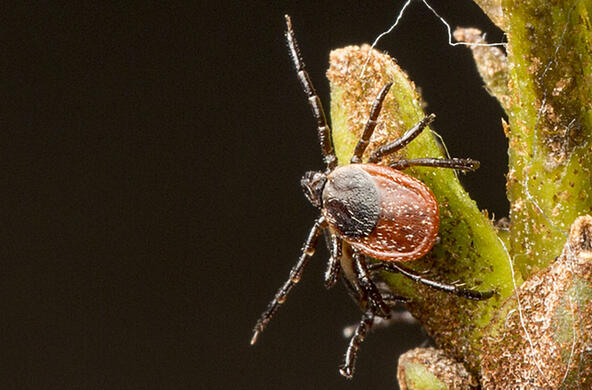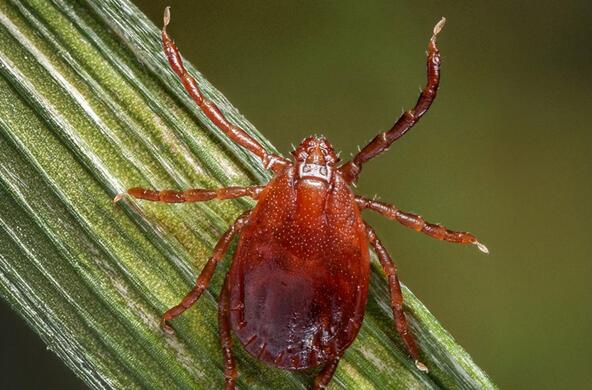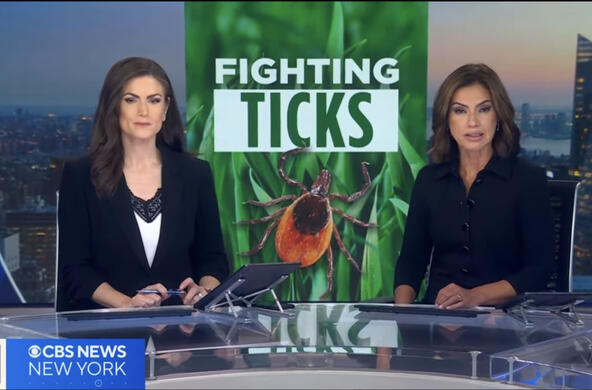As a child, Kristin Chippari suffered for years with undiagnosed and then chronic Lyme disease."It haunts me every day," the 22-year-old Town of Poughkeepsie resident said.
So as the extreme cold weather descended this month, Chippari became hopeful.
"I don't know exactly in what temperatures or conditions (ticks) are killed off," she said. "But every time I hear it's going to be really cold, I hope and pray."
The mid-Hudson Valley has among the nation's highest rates of Lyme disease, according to the latest national figures, from 2002 to 2006. New York state reported an average 7,700 Lyme disease cases in each of the last five years, with 435 residents in Dutchess and 370 in Ulster diagnosed in 2012.
Local scientists say evidence suggests that very low temperatures can increase mortality of ticks and other bugs. But extreme cold may be less effective in killing them than extreme variability.
"I think this weird frost-thaw cycle is going to be important," said Shannon LaDeau, a disease ecologist at the Cary Institute of Ecosystem Studies in Millbrook. "And it may be important in a way that is different than another year that was cold all year."
A 2012 study co-authored by Cary Disease Ecologist Rick Ostfeld examined the probability of tick mortality in winter conditions in Millbrook and Syracuse.
The study found that exposure to subzero temperatures increased mortality slightly.
However, the increased death rate "only occurred at super-cold temperatures and it wasn't a clear die-off, just an increased probability of dying," Ostfeld said.
Indeed, more than 80 percent of the ticks survived at both sites, regardless of the winter conditions.
Scientists say that if weather could have a significant effect, it may not be cold itself — but rather the combination of extreme cold followed by warm spells.
Earlier this month, local temperatures dropped below zero and then warmed up significantly.
On Jan. 4, the low temperature in Poughkeepsie dropped to minus 9 degrees at 5:39 a.m., according to National Weather Service records.
Two days later, the high temperature in Poughkeepsie climbed to 58 degrees at 8:47 a.m., a 67-degree swing in 51 hours.The following day, the low was 6 degrees.
"As we know," said Peter Jentsch, a scientist with Cornell Cooperative Extension's Hudson Valley Lab in Highland, "most living things are able to survive environmental extremes if they have enough time to transition and acclimate to change."
Jentsch, whose area of study includes the increasing presence of stink bugs in the mid-Hudson Valley, said insects that don't relocate use freeze-protection physiology to alter cellular contents so they are less prone to freezing.
Those processes are helped when the insects are able to exist with some sort of snow cover.
"Loss of insulation provided by snow cover and exposure to driving rains will certainly increase mortality," Jentsch said.
Nymphal ticks can become active even in the winter if the weather gets warm enough. How much energy it takes for them to come up out of the soil and go back down could actually be an important influence on survival, LaDeau said.
LaDeau said that much of what is known about tick mortality is from studies conducted in the lab. But those experiments may not factor in other conditions found in nature, such as varying humidity or changes in leaf litter or snow levels.
"If you have snow cover, extreme temperatures don't have the same effect as if you don't," LaDeau said.
LaDeau said she and Ostfeld have a study proposal before the National Science Foundation that would examine how temperature in the winter may or may not influence the survival rates of nymphal ticks.
"It's really a much more nuanced question then just how cold does it have to be for them to die, which you can ask in the lab," she said.
The local scientists say weather conditions may provide a temporary respite from ticks and other pests.
But don't count on the changes to last.
"The interesting thing about (bugs) is that they have a tremendous capacity for rebound," Jentsch said. "Reducing the population by 30 to 60 percent may still lead to very high populations of the species in the fall."








